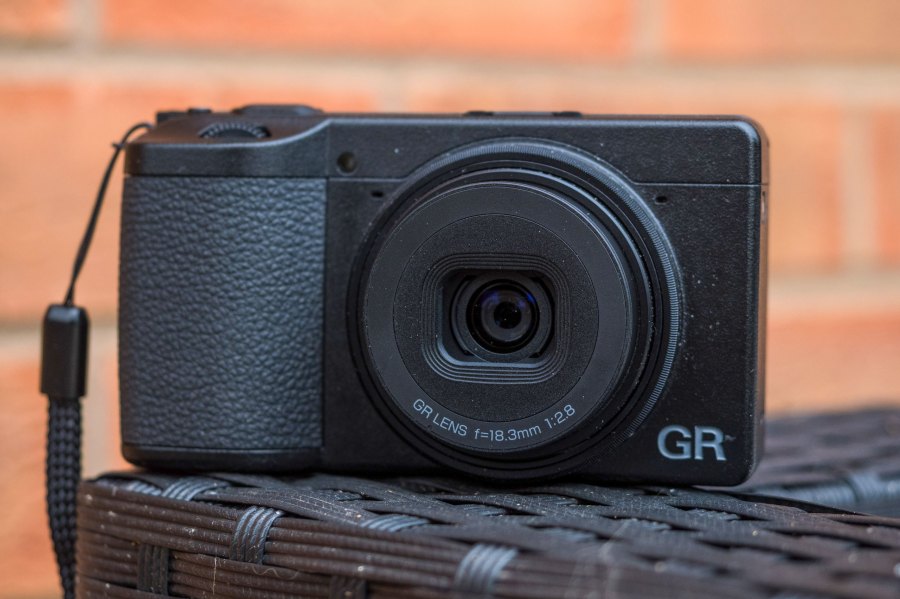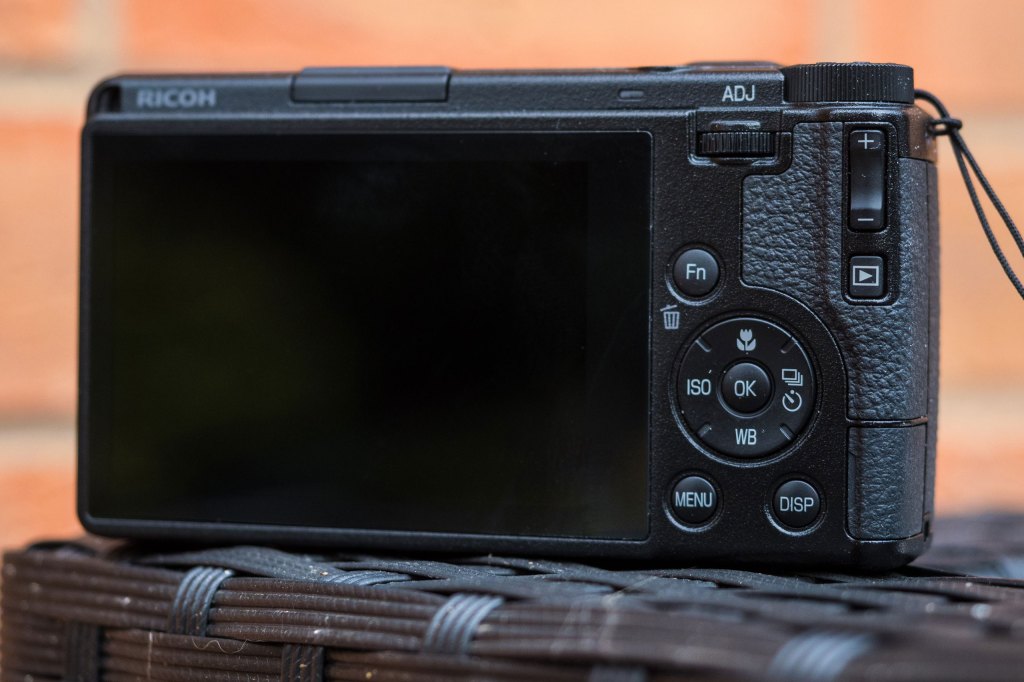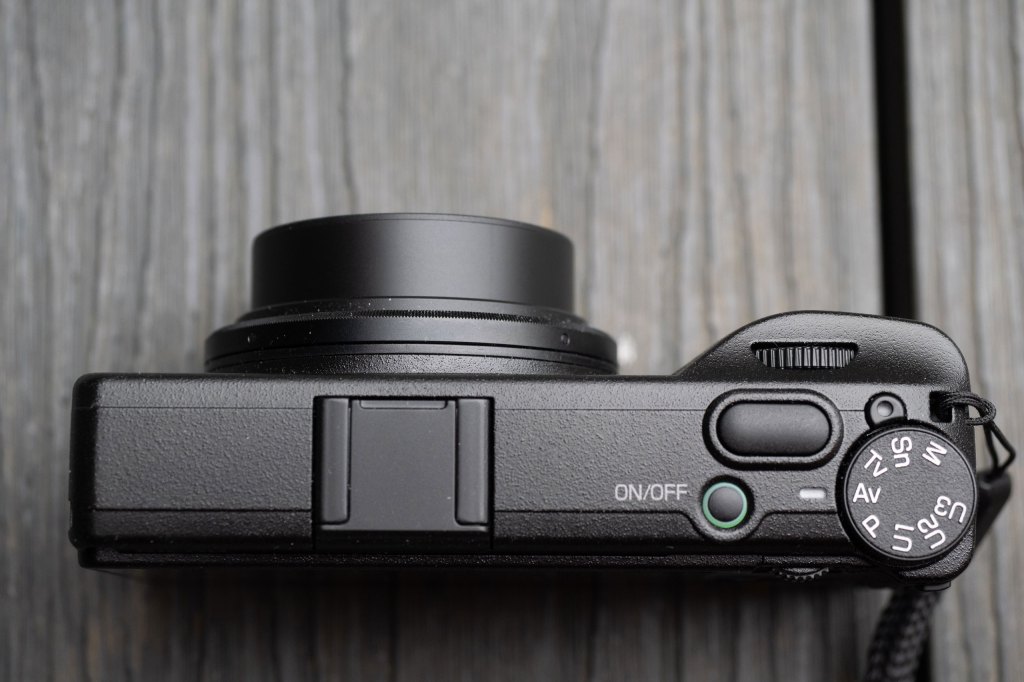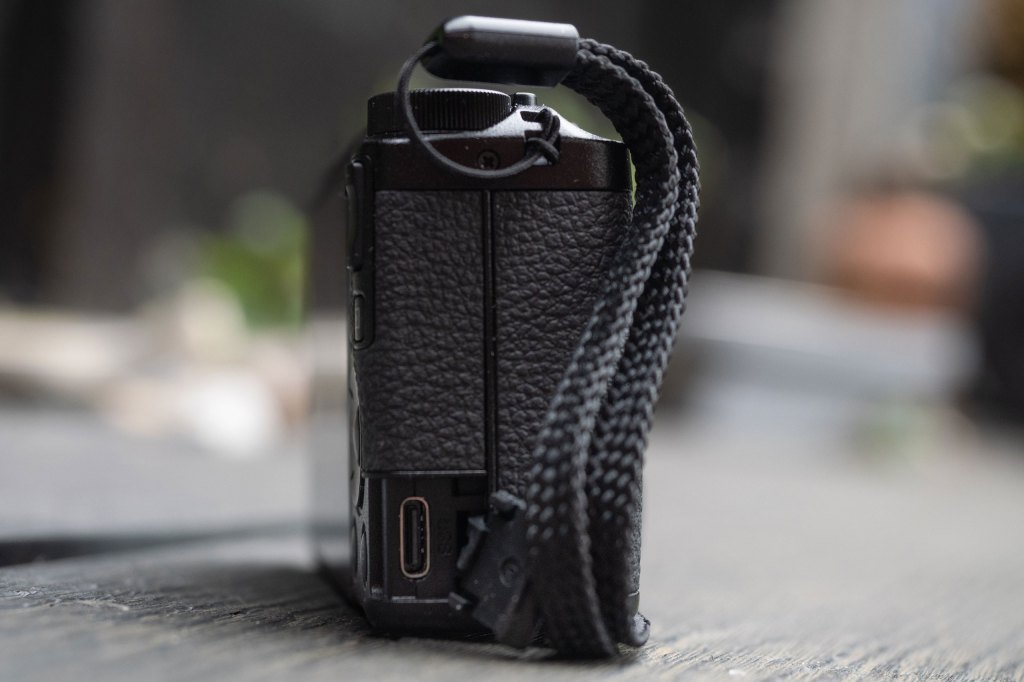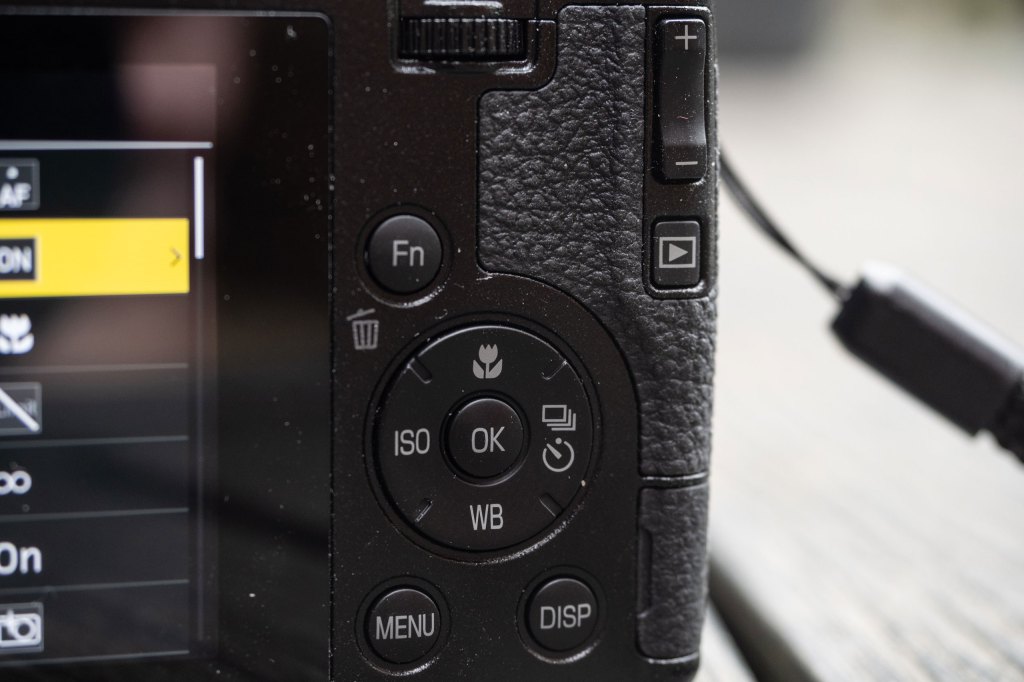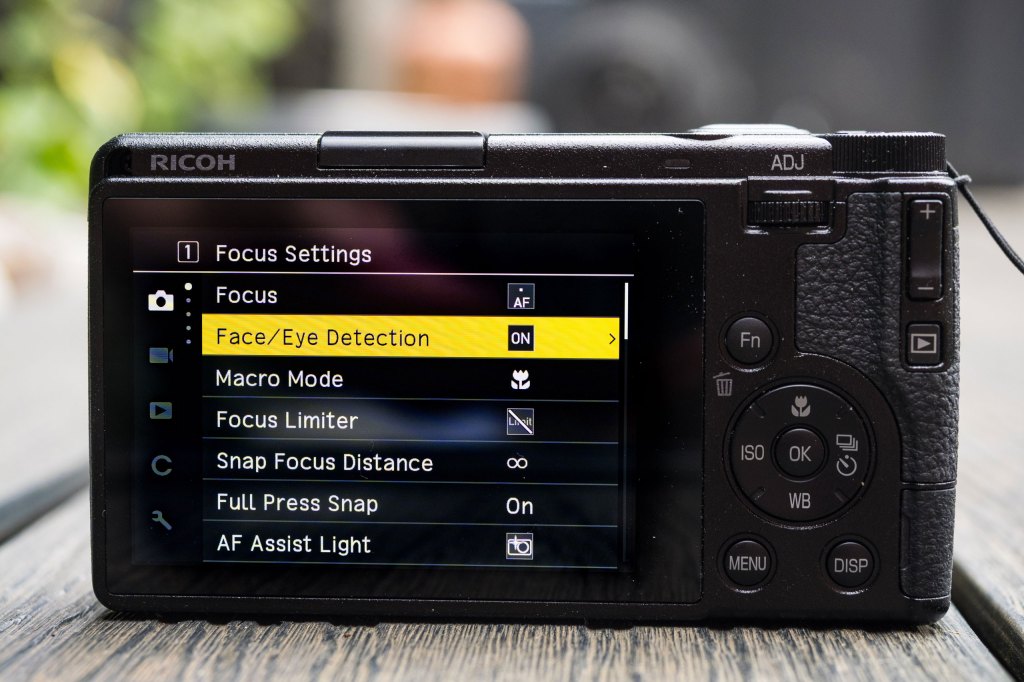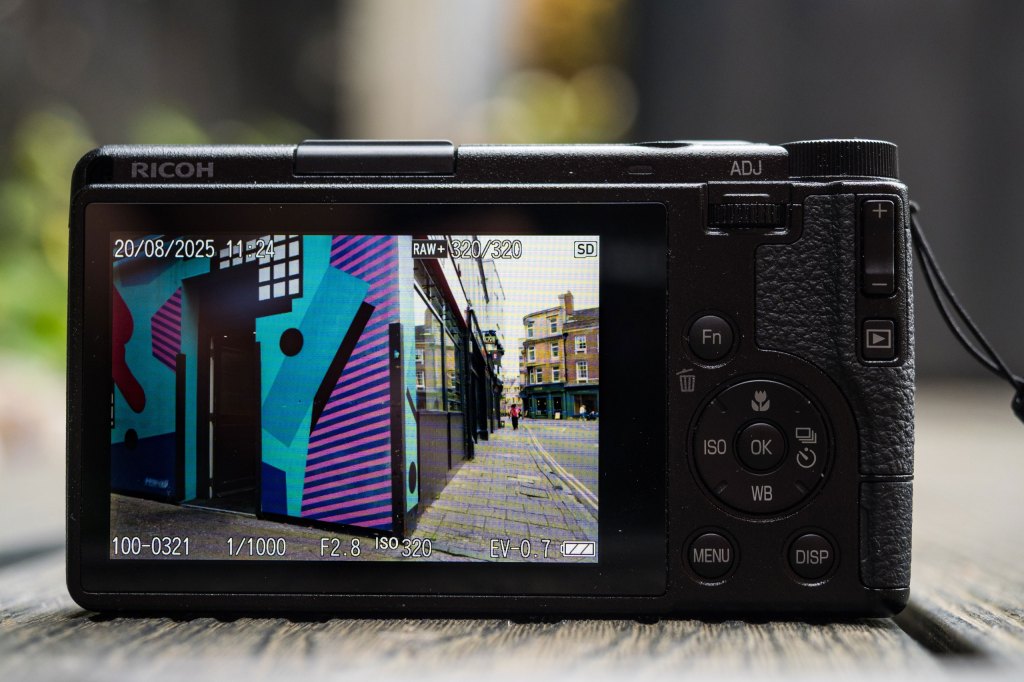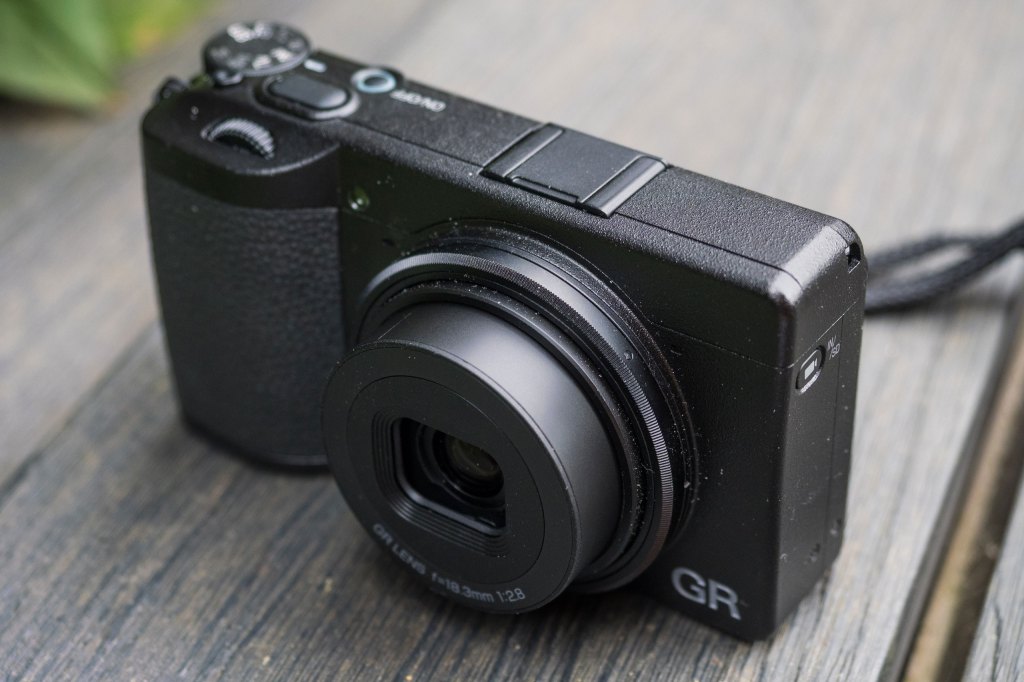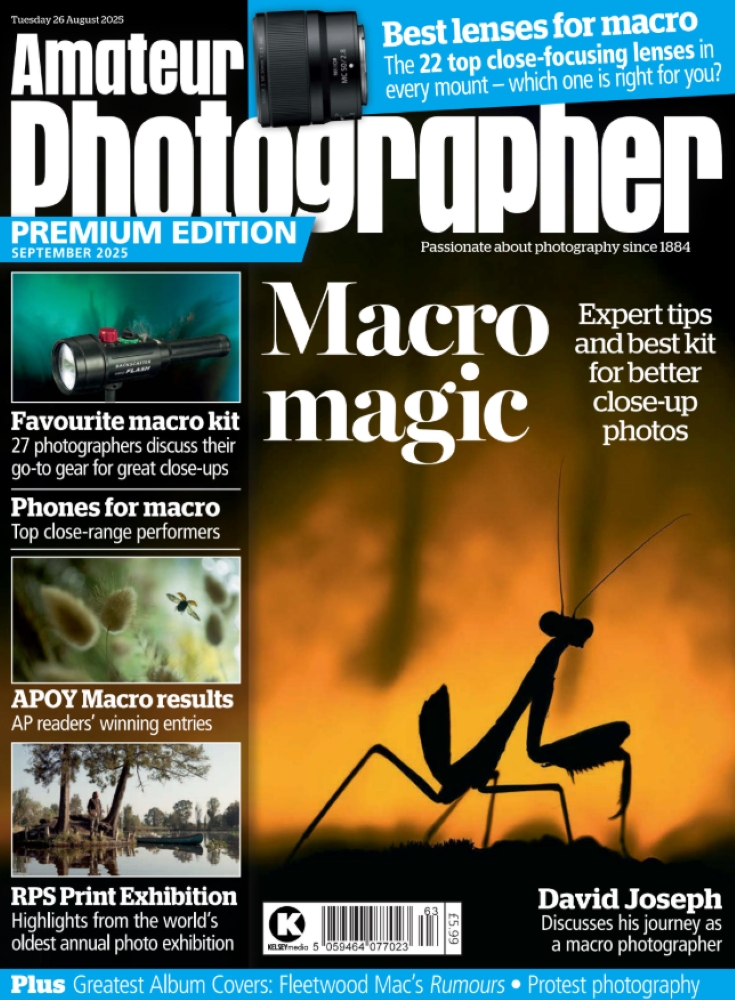Amateur Photographer verdict
While the Ricoh GR IV may look very much like its predecessor, it’s been substantially upgraded inside. It retains the same street-shooter appeal, though, if you can live with its fixed rear screen.- True pocket-friendly dimensions
- Excellent image quality
- Fast start-up time
- Discreet design
- Fixed LCD and no viewfinder
- Lower resolution than rivals
- Micro SD card storage
There’s a popular saying circulating on social media these days, and it’s ‘if you know, you know’ (or IYKYK for short). It’s a saying well-placed for Ricoh’s GR system. Even in photography, there are a handful of rare occurrences where there seems to be universal understanding, and one of these examples is that the Ricoh’s GR II and GR III cameras punched well above their weight, making them some of the best compact cameras around. Lauded by a cult following of street and travel photographers, the GR III was launched seven years ago, but has remained in demand, so much so that the price tag has actually risen over the years – how many cameras can you say that about?
Ricoh GR IV at a glance:
- $1499 / £1199
- 25.7MP APS-C BSI-CMOS sensor
- 28mm equivalent f/2.8 lens
- ISO 100-204800 (standard)
- 4fps continuous shooting
- 3in, 1.04m-dot fixed touchscreen LCD
- Full HD 60p video recording
Fast-forward to 2025 and Ricoh’s latest GR IV has finally broken cover. Just as the Ricoh GR III was a refinement of the GR II, the GR IV stays true to this heritage, and is best described as an evolution of its predecessor rather than a drastic revolution. This shouldn’t be a surprise to existing GR users as, after all, there is an element of ‘if it ain’t broke’ to the GR range.
However, technology has moved on dramatically over the last seven years. So what is new in the GR IV, is there enough to justify an upgrade, and does this camera offer enough to win over street and travel photographers?
Features
To look at the GR IV at first glance, there really isn’t that much change from the GR III. There’s the same fixed 28mm equivalent focal length lens with an aperture from f/2.8 to f/16, albeit with a slightly different lens construction. Remember though that with the GRIII, Ricoh also offered the GR IIIx variant, which delivers a 40mm equivalent focal length.
One figure that’s sure to jump out, though, is the resolution. Although the GR IV utilises a new APS-C sensor, the resolution increase is incremental – up to 25.7MP from the GR III’s 24MP. That’s not a big jump, but it does return a max file size of 6192×4128 pixels – more than enough to create A3 prints, or to crop in on frames for use on social media without overly compromising on image quality.
Internally, however, there are bigger updates. First up, while the GR III offered 3-axis stabilisation, this is now upgraded on the GR IV to a 5-axis in-body image stabilisation (IBIS) system. In the field, this works impressively well and will come in handy when users are capturing frames in low-light conditions where shutter speeds will be longer.
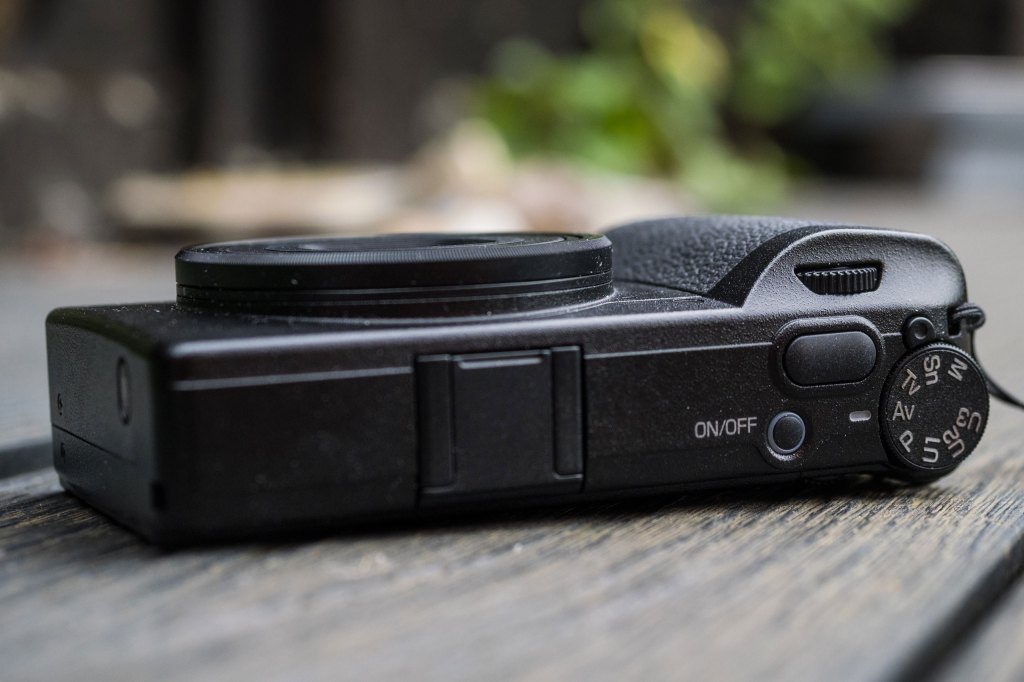
In another internal change, the GR IV features a substantial 53GB of internal storage, a massive jump from the GR III’s paltry 2GB. This is a huge quality-of-life improvement, as it means you’ll always have a backup storage option, even if you forget to bring a memory card. And, talking of cards, it’s important to note that the new model switches to a microSD card slot instead of the full-size SD slot found on previous GR iterations. This has probably been done to create space for the larger battery that’s found on the GR IV, which will go some way to combating a common groan from GR II and GR III users.
Of course, while a new battery will increase capacity, there is a limit to what Ricoh can do here. The dimensions of the camera are more-or-less the same, and to keep it pocket-friendly, the battery is never going to be able to match the same capacity as a full-frame mirrorless camera. However, users do have the USB-C port to fall back on, where they can simply plug in a powerbank and charge on the go, and this will extend your day out with the camera.
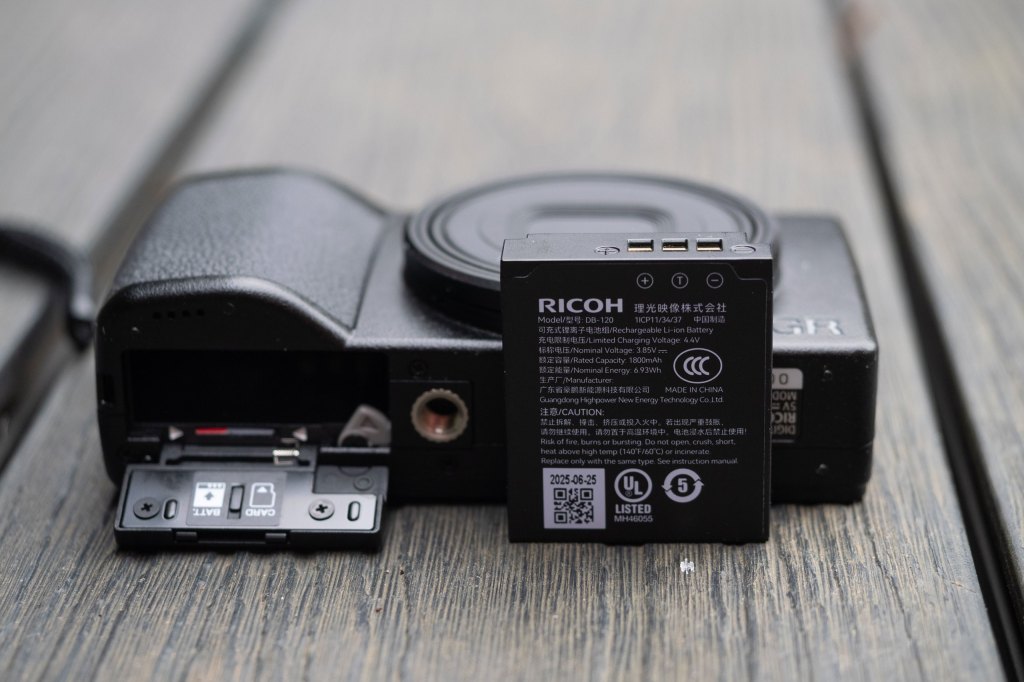
Creative imagery can be captured via the Image Control options, which is Ricoh’s name for picture styles or art filters. With choices including Vivid, four Monotone variants, Negative Film and even and HDR Tone selection, there is plenty to allow photographers to be creative in-camera.
Built-in lens
The lens’s focal length of 18.3mm is equivalent to 28mm in full-frame terms. It’s tried-and-tested and versatile, as it’s the same focal length used on the previous GR cameras. As before, there is an option to employ an in-camera crop feature, which changes the effective focal length to either 35mm or 50mm, but at the expense of resolution. I find 28mm to be a decent sweet spot for this genre of compact camera and would rarely use the crop feature, unless perhaps I was switching from some travel shots to more portraiture work.
The f/2.8 maximum aperture is still a huge boon for the GR system. Delivering rapid shutter speeds in low-light conditions (which street photographers will often have to contend with), the fast aperture also delivers a shallow depth-of-field to throw the background out of focus. When shooting smaller subjects, photographers can engage a Macro mode, which enables users to fill the frame with small subjects and focus up to just 6cm away.
Shutter speeds can be slowed down via the built-in ND filter which, like the GR III, offers two stops of attenuation. On a bright sunny day, that won’t affect the image drastically. But in the city, where tall buildings create shade, it can be enough to introduce blur and movement into your frame, opening up new creative options. This feature benefits hugely from the new IBIS system, which will enable you to hand-hold the camera and keep the frame free from shake while still capturing motion.
Ricoh GR IV – six key points
- Premium image quality: Don’t get caught up in the megapixel numbers, this sensor serves up excellent image quality.
- Super storage: A massive 53GB of internal storage is a game-changer and to fit that amount of back-up storage in such a small body is a huge win for Ricoh
- Redesigned lens: With a seven-element, five-group construction, the updated lens keeps the 28mm focal length seen on previous GR iterations, but has been optically tweaked
- Sure and steady: Changing up from a three-axis to five-axis IBIS system enables the GR IV to offer up to six stops of shake compensation, which will come in handy when shooting in low light.
- Rapid start-up: Street photography is about fleeting moments and the start-up time of the GR IV is just 0.6sec, so you shouldn’t miss any frames.
- Top-up on the go: The sole connector port is USB-C, for data transfer or recharging the battery, including from a powerbank
Build and Handling
When it comes to handling, the GR IV is a very easy camera to pick up and use. This camera is designed for one-handed shooting – you should be able to tap the screen and adjust the dials with just one hand. The ergonomics are excellent; tipping the scales at just 262g, the grip is decent and a wrist strap is supplied. But I would probably invest in a wider wrist strap for long-term comfort and security.
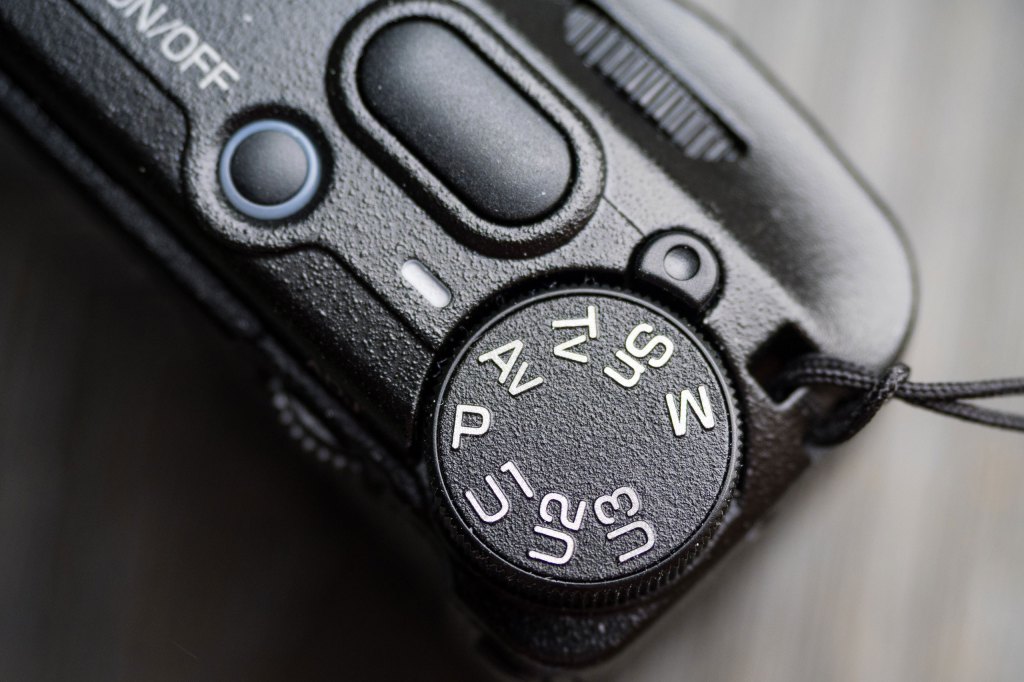
Almost all the dials and buttons are set to the right of the LCD. The shutter button is large and easy to find, so you won’t be fumbling around when trying to take a photo. However, the d-pad is a lot smaller than you’d find on a typically sized mirrorless body. The exposure mode dial has a locking button to prevent accidental changes, which you have to press down before it will twist round.
Two control dials at the front and back are used for changing exposure settings. There are also +/- buttons under your thumb to control Exposure Compensation, so this can be altered quickly on the fly. These buttons were found on the GR II but dropped on the GR III – it’s good to seem them back.
A function button on the left side of the body has a double action. It enables you to switch between Micro SD card / Internal memory, while also helping switch between stills and video mode, with either a long or short press of the button.
Recharge time on the new battery is impressive; I went from ‘battery icon flashing red’ to full in just over 50 minutes via a fast charge plug, and the GR IV carries over the USB-C port from the GR III, making it easy to connect to a powerbank. The battery catch mechanism is okay, but not overly robust and there’s no doubt the Micro SD card slot makes changing memory cards more of a fiddly job.
While talking about protection, as an existing GR user, I tend to slip the camera into a thin wallet to offer a layer of protection to the LCD. It doesn’t have to be much, but, as users may well tend to keep the GR IV in their pockets where car keys can live, it’s well worth taking this step to preserve the condition of the body as much as you can.
Screen
The 3-inch touch-sensitive LCD is still fixed and not tilting, but it feels more premium than the GR III version. It’s rare these days to find cameras without a tilting or vari-angle LCD, but this is the compromise of such a small body. Personally, I may have taken a bump in the size of the camera to accommodate a tilting hinge, but after a few hours you retune into using a fixed LCD. Some will also bemoan the lack of an EVF, but personally, I’m happy to work with the LCD, and 3-inches of screen is generous given the small footprint of the body.
The screen displays plenty of information, and its brightness can be customised via the Menu section. It also features an Auto Dim option to save power after a few seconds of inactivity. But best practice with this camera is to get your shot and then turn the camera off to save battery, so it’s rare that the Auto Dim feature will kick in. Visually, the LCD is pleasant to use in different lighting conditions and when you review an image, it’s easy to zoom in to check your focus is on point.
Autofocus
The hybrid phase/contrast detection autofocus system has definitely benefited from some hard work by Ricoh’s R&D crew. It’s faster and more accurate than the GR III’s system and this in turn gives you the confidence to rely on it. GR cameras include a Snap focusing function, which can be set for different distances, but I preferred to work with Single-point AF and lean on the Face Detection technology when including people in my frame.

When set to Macro mode, the AF takes a little bit of a hit, and there were a couple of occasions when it would hunt for focus, but this was rare. Manual focus on the GR IV is done by employing the Macro mode and using the -/+ button to change the distance. But given how good the AF system is on the GR IV, I didn’t use the manual focus much at all.

With that touch-sensitive LCD, you can tap to select a focus point, which is an incredibly quick way of establishing focus. While the GR IV offers Face/Eye Detection, there is no Subject Detection feature, but how important an omission is this? In my view, not so much, as this camera is a tool for street and travel photography. I don’t think the ability to select Subject Detection for trains or animals is going to be a dealbreaker for any potential buyer, even if the price does stray into territory where rivals offer subject detection.
Image quality
Images can be saved in JPEG or DNG raw file format and there’s an option to record both file types at once. This is useful as if you employ an Image Control profile (such as black & white), the JPEG will save in this profile, while the raw file will serve as a backup copy in case you don’t like the effect and wish to process the image differently.
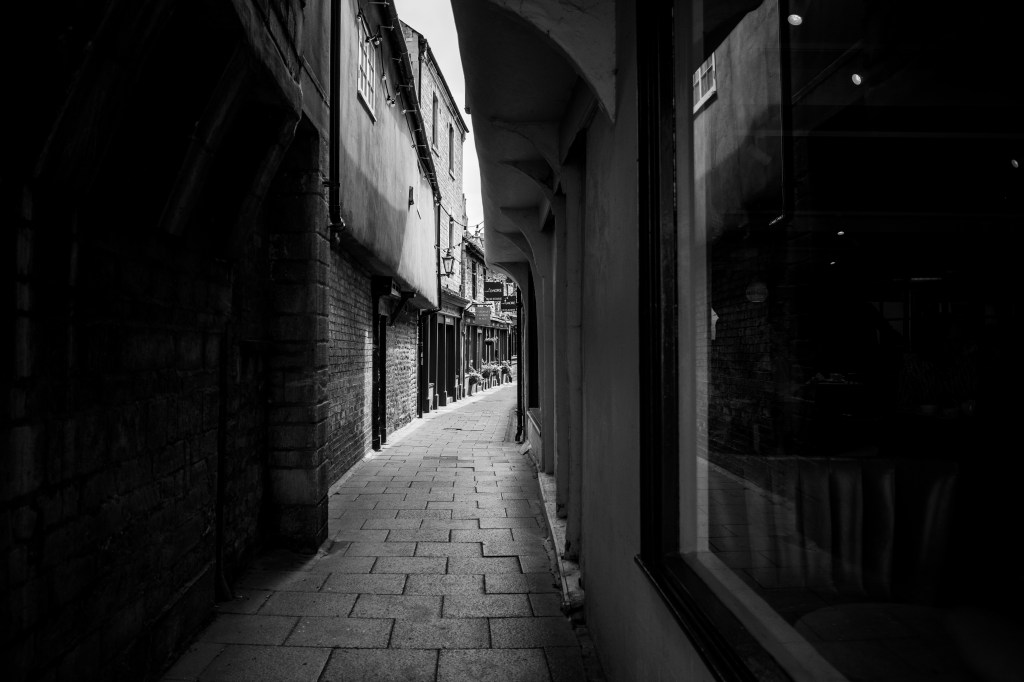
I’m impressed with both the overall image quality and the amount of tonal data in the DNG files. Shadows can be boosted and skies rescued in software such as Lightroom. Because the raw files are DNG rather than some type of proprietary format, there’s no need to wait for Lightroom updates, unlike with other new cameras.
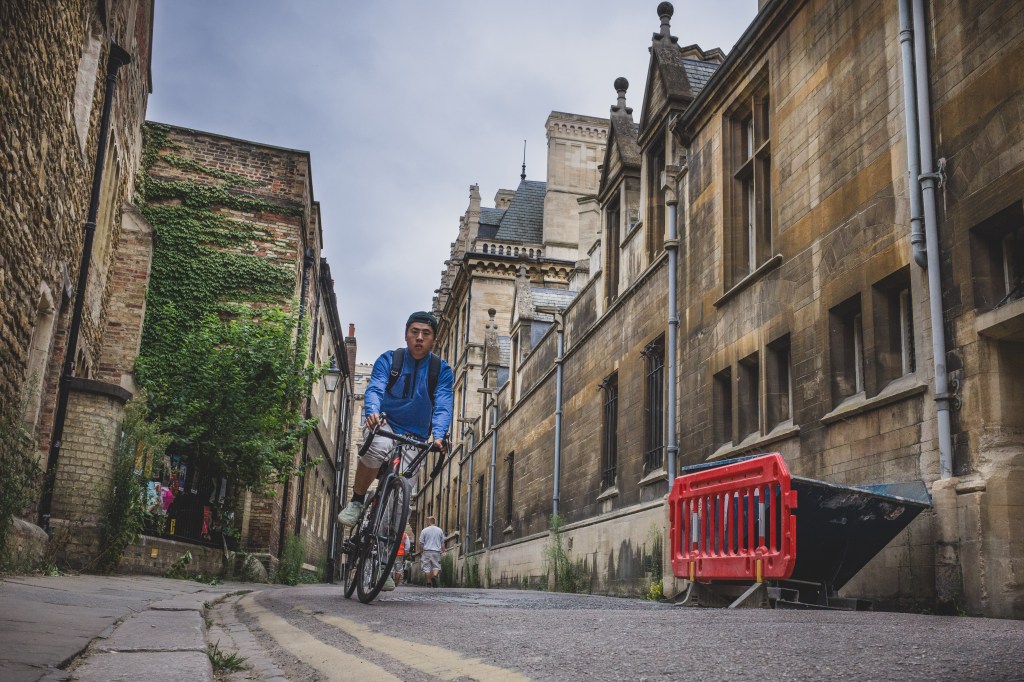
JPEGs straight out of camera (when the Image Control is set to standard) produce true, natural colours without any over-saturation. Noise is well-controlled and the GR IV has a higher native ISO ceiling than its predecessor (ISO 204,800 vs 102,400). However, it’s unlikely you’d use the ISO pushed right to the limit.
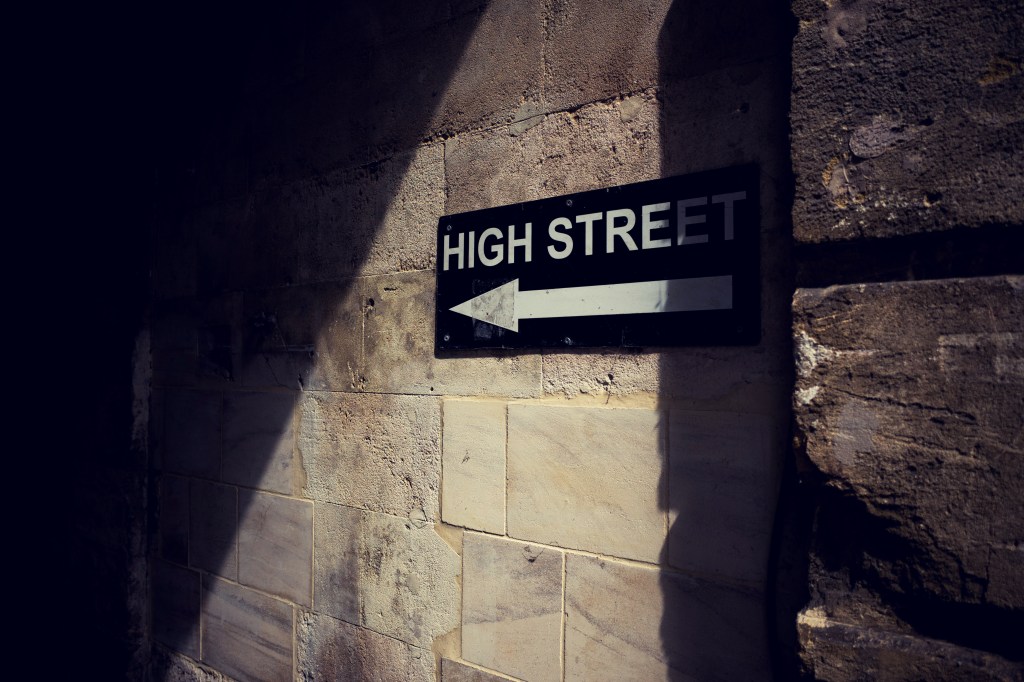
The fixed lens is incredibly sharp, even with the aperture at f/2.8. Because of this, I suspect many will fall into the habit of keeping the aperture set wide open.
Ricoh GR IV: Our Verdict
The GR IV, like the GR models before it, is a go-anywhere camera. One to pop into your pocket and take out every day. The control system is well laid-out and, even if you haven’t used a GR camera before, you’ll be able to get up and running in no time. And this is the essence of the GR IV; a camera with decent features, but not overwhelmed with things that will slow you down. In truth, this ‘less is more’ approach will help you live in the moment, capture fleeting scenes and focus on the art of picture-taking.
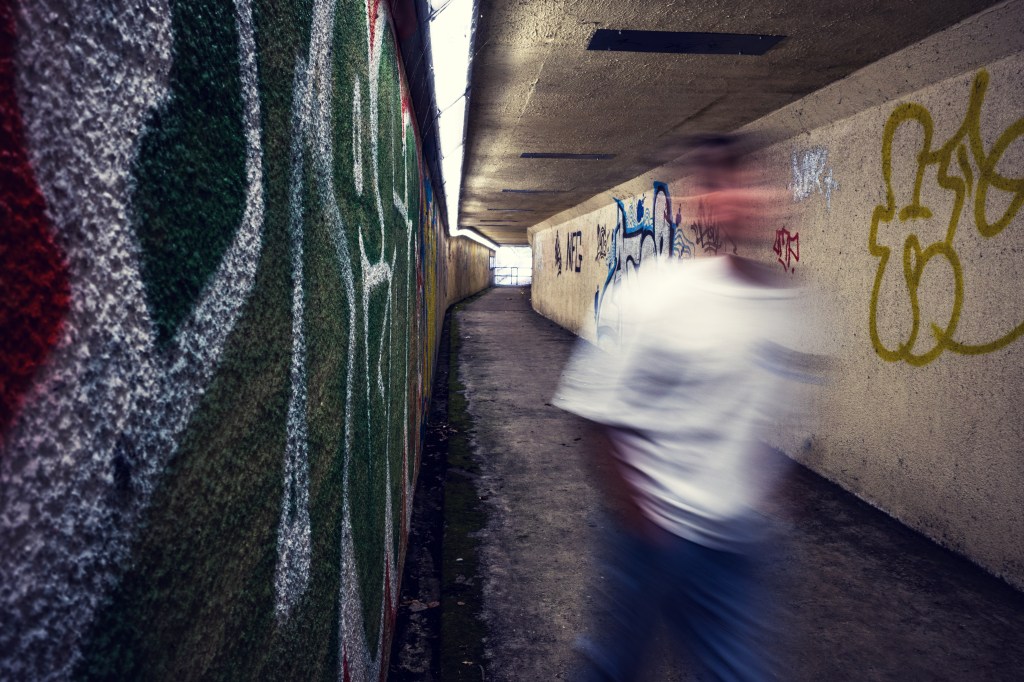
In my opinion, the GR IV is a more efficient camera than the GR III, with a quicker start-up, a faster autofocus system, enhanced IBIS and (albeit marginally) higher resolution. Although it offers Full HD video, this is not a camera for making movies – instead, it’s an excellent option for the times when you don’t want to be loaded down with a heavier body and lens combo. The compact, black design offers a high degree of discretion and to most people, it could well look like you’re taking a snap with a smartphone, when in reality you’re making the most of that APS-C sensor that returns excellent image quality.
There are two (maybe three) key areas where some potential buyers might feel a little disappointed. First up, after seven years, I think we were all expecting a bigger hike in resolution. But the fact that the camera returns such good image quality will quell this niggle. Secondly, it’s very rare these days to find a camera with a fixed LCD. While this does keep the size of the body down, there is part of me that would have accepted a slightly larger form factor if it had meant Ricoh adding a tilting screen, especially for candid street shots taking from the hip. Oh, and finally, it would be great if we saw a monochrome version of the Ricoh GR sometime this year (or next).

Follow AP on Facebook, Instagram, YouTube and TikTok.
Ricoh GR IV full specifications
| Sensor | 25.87MP APS-C CMOS, 23.3 x 17.5mm |
| Output size | 6192 x 4128 |
| Focal length mag | 1.5x |
| Lens | 18.3mm f/2.8 |
| Shutter speeds | 30sec – 1/4000sec |
| Sensitivity | ISO 100-204800 |
| Exposure modes | PASM, Snap Distance Priority AE |
| Metering | Multi, centre-weighted, spot, highlight |
| Exposure comp | +/-5EV in 0.3EV steps |
| Continuous shooting | 4fps |
| Screen | 3.0in, 1.04m-dot fixed touchscreen LCD |
| AF points | Freely positionable |
| Video | Full HD 60p |
| External mic | None |
| Memory card | Micro SD |
| Power | DB-120 rechargeable Li-ion |
| Battery life | Approx 250 images |
| Dimensions | 109.4 x 61.1 x 32.7mm |
| Weight | 262g (Including battery and card) |

